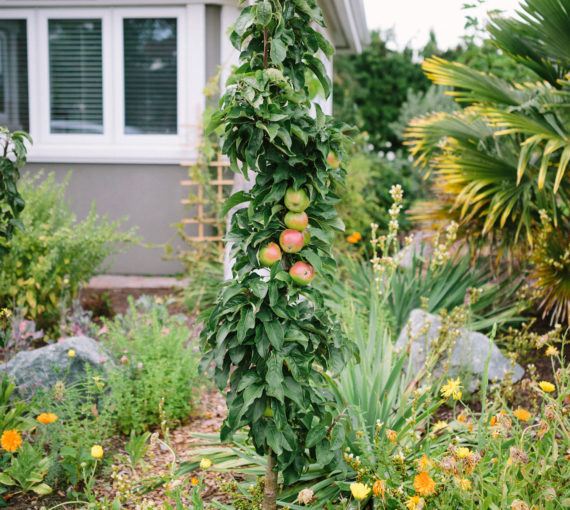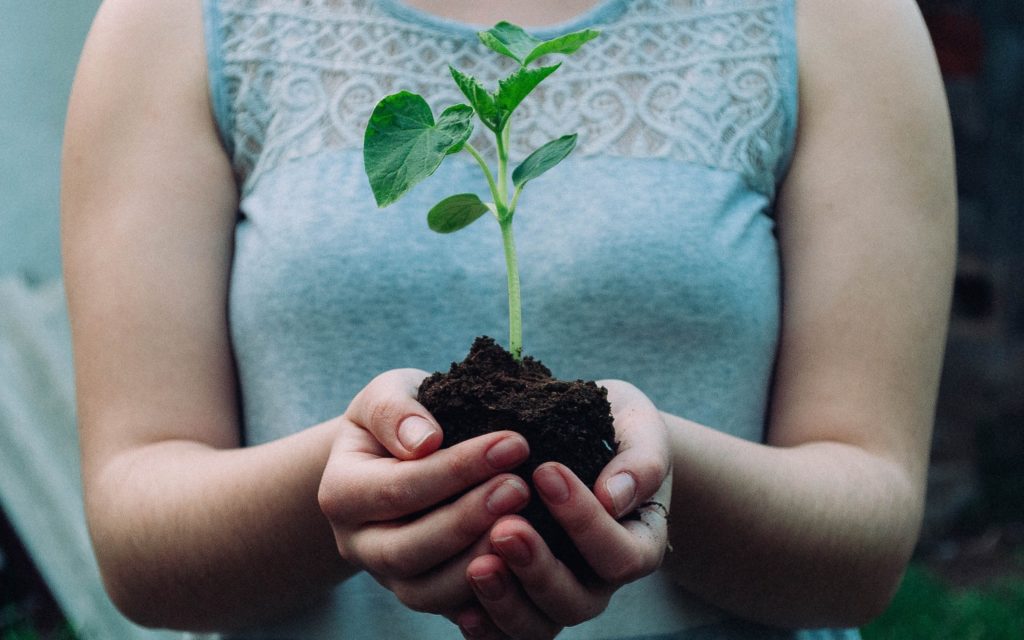
Grow your own groceries once you map the sun and choose a planting strategy like “no dig” or pizza gardening. (Photo: Nikola Jovanovic via Unsplash)
Want to grow a garden?
There are many reasons to dig in!
- Eat delicious, fresh, local, organic food — for your health and to take climate action. Did you know “greenhouse gas emissions can be cut by 2 kilograms for every kilo of homegrown vegetable when compared to the store-bought counterpart?”
- Save money and avoid wasteful packaging. A small urban lot with less than 0.024 hectares (0.06 acres) in production might enjoy yields worth $3,500 to $6,000 per year!
- Enjoy the physical and mental health benefits of digging in the dirt (thanks to soil microbes). Being regularly immersed in a natural setting also reduces stress and boosts immunity, ingenuity and energy.
- Support biodiversity. You’ll help pollinators and attract birds, bats, insects, snakes, frogs and other beneficial wildlife
Where and how will you plant?
Sketch a sun map
Is your yard, balcony or windowsill in full shade, part shade, full sun or a combination? No need to guess. Find out how to map or sketch the sun’s daily pattern. You’ll save time and money planting in the correct places and learn how to interpret instruction tags on plants.
“Full sun” means the site receives more than six hours of sunlight each day. Beware of frost pockets (dips or the lowest part of your yard) and note if you need wind protection.
Ditch the grass
Use sheet mulch instead of tearing up sod. Put down about three layers of cardboard (free from tape and/or staples) to smother the lawn. Then add soil, compost or raised beds and get planting annuals and perennials — maybe start a food forest!
Free arborist wood chips are great for trails between beds. Call a tree-trimming company to ask for a free load or flag down a truck chipping in your neighbourhood.
Tip: Fill raised beds with 30 to 40 centimetres of soil and compost.
switch from mow to grow with these nine alternatives
Keep a planting journal
Record what you planted and where, and how it did. That’ll make it easier to plant crops next season. Or take pictures and draw a map of beds and containers. Timing is everything. Check regional planting guides to avoid failed crops and a broken heart! For vegetables and herbs, check out these guides. For native plants and wildflowers that attract pollinators, learn about your specific ecoregion within Atlantic Canada, Quebec, Ontario, the Prairies and British Columbia.
Amend soil with compost
Backyard compost (fully decomposed) is a simple way to feed your garden and build up organic matter. Good store-bought compost brands will be free from plant disease, weed seeds and agricultural herbicides. Research a source or ask a retailer. Eco-conscious gardeners avoid peat moss because peatlands store carbon. And when the living layers of centuries-old bogs are mined, carbon dioxide is released (among other negative biodiversity consequences). Municipal compost can be good, although not good enough for certified organic farmers.
Want to create your own organic compost? Here are some simple do’s and don’ts. Composting is cheap and easy, and can turn some of your yard trimmings and kitchen scraps into plant food!
Test your soil
Soil health is important. Urban soils can sometimes contain contaminants like heavy metals (e.g., lead, cadmium) that make their way into fruits and veggies. Check to see if any local organizations that promote urban gardening test soil samples for free! And learn more about healthy gardening practices.
How do contaminants get into your garden?
- Through rain.
- Wind moves dust from the street.
- Vehicle emissions (backyards are less at risk than front yards or boulevard gardens).
How to prevent or reduce risks of soil contamination?
- A neutral pH (6.5 to 7.5) can immobilize or bind lead, zinc and cadmium. Many metals are more bioavailable in acidic soils.
- Leaves are great for mulch, providing a protective blanket come fall and winter. They’ll help insulate roots in winter and keep them cool in summer. But don’t collect leaves from roadsides.
- Don’t plant edibles within three metres of buildings or busy streets where lead levels are highest.
- Don’t make garden beds from chemically treated wood like railroad ties or pressure-treated lumber.
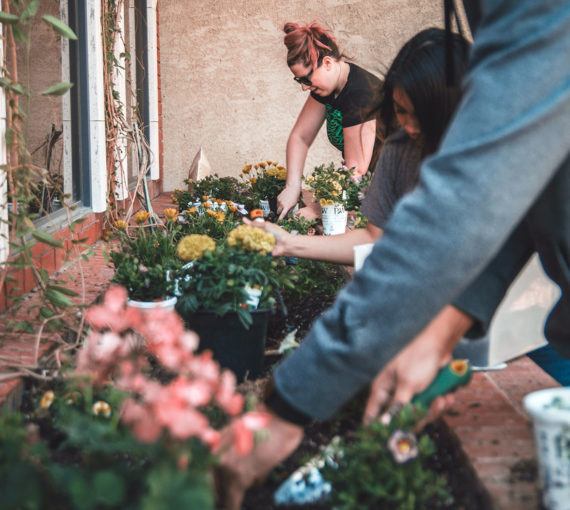
How to source native plants and seeds
Native wildflowers are adapted to local climate and soils and require less care and watering once established. Get locally adapted, often free native seeds or plants from seed libraries, seed swaps and Seedy Saturdays or salvage from development sites.

Idea! Plant a pizza garden
Grow most of what you need to create your favourite pizza toppings and sauce in a small- to medium-sized garden bed. Most ingredients are sun lovers!
Limited to a few pots on the balcony? Grow herbs in one container and one or more containers of tomatoes. You can create a delicious pizza sauce.
You’ll need:
- Two to three tomato plants.
- One jalapeno pepper plant.
- Two to three herb plants like basil, sage and oregano.
- One zucchini plant.
- Two sweet or bell pepper plants.
Four planting strategies
1. “No dig”
Digging and turning destroys soil structure and its living community. The top 10 centimetres of soil contain active microbes, worms and more that you’ll need for a successful garden! Linda Gilkeson, author of Backyard Bounty: The Complete Guide to Year-Round Organic Gardening in the Pacific Northwest, shares the harms and risks associated with deep cultivation:
- Breaking up important fungal mycelia. (Did you know a fungus is one of the largest living organisms on Earth?)
- Killing worms.
- Burying microbes with less oxygen and carbon dioxide exchange.
- Bringing up weed seeds to germinate.
- Breaking up the capillary flow of water to the roots from below.
Plant seeds and seedlings in the soil and organic matter, leaving the digging to worms.

Tip!
Roots (beets, parsnips and carrots) can be great at busting up clay soils so put them to work!
2. Intensive gardening
No more neat row-by-row planting! Grow more food in less space with less work using these intensive gardening techniques:
- Create permanent garden beds to avoid trampling.
- Add lots of compost to slowly release nutrients, hold water and improve the soil.
- High-intensity mixed planting — use the entire surface of each bed.
- Succession planting — stagger plantings to extend the growing season and replant gaps after harvest with plants like kale, lettuce and garlic.
3. Crop rotation
For farm crops, rotation is a way to manage soil fertility (but for home gardens, adding compost is the best way to add nutrition). Rotation can be helpful to avoid soil-borne root diseases.
- All veggies need nitrogen. Leafy greens and those in the cabbage family need it most.
- Nitrogen-fixing species (legume family) provide this nutrient to other plants and microbes in their immediate vicinity.
- Root veggies need potassium.
- Fruits like phosphorus.
- Rotate based on plant families since pathogens are host-specific.
- Rotate crops that are heavy feeders and deplete soil nutrients, such as garlic, squash and tomatoes.
- Most at risk for root diseases are the onion family and potatoes.
- A short rotation (a few months) is needed between carrot family crops to prevent carrot rust fly.
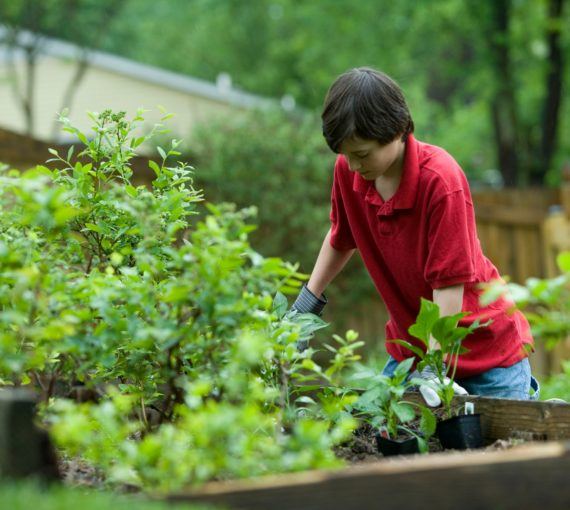
Tip!
Generally there’s no need to rotate edible perennials. But you may need to dig up and replant strawberry beds every two to four years to avoid overcrowding. (You’ll know it’s time when you see no fruit production.)
4. Intercropping
This means growing different crops close together at the same time to improve yields in a small space. If your climate allows, plant winter crops into summer plantings. In some cases, you can choose a “canopy” and an “understory.”
- Alternate rows of radishes (an early crop) with carrots.
- Stagger fall brassicas (e.g., broccoli, cauliflower and cabbage) with cucumbers (as long as they’re not shaded completely).
- Plant lettuce with any crop that gets larger, later in the season.
- Thread late-season squash vines between mature plants (or send them to ramble and spill into non-garden spaces).
The Permaculture Research Institute suggests:
- Avoid plants from the same family in the same grouping.
- Choose plants with similar water needs with different root systems (to avoid competition underground).
- Consider how plants might affect sunlight access (e.g., “nurse” plants provide shade and moderate the microclimate for new seedlings).
- Combine plants with different growth rates so they won’t interfere with each other at the most crucial points of development.
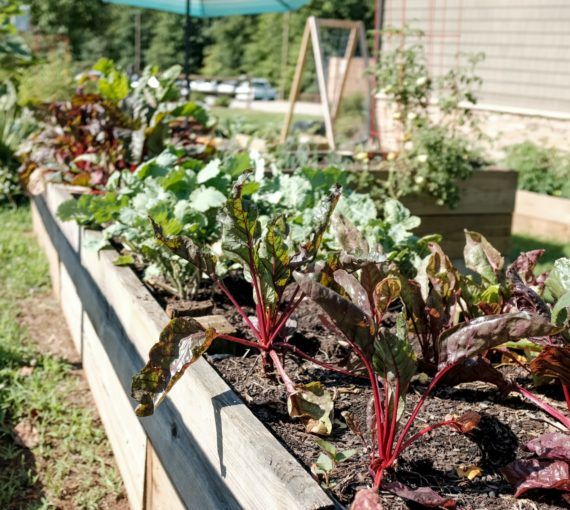
Tip!
Connect with local garden experts, such as a provincial Master Gardener group, or use web and social networking sites to find gardening clubs throughout Canada.
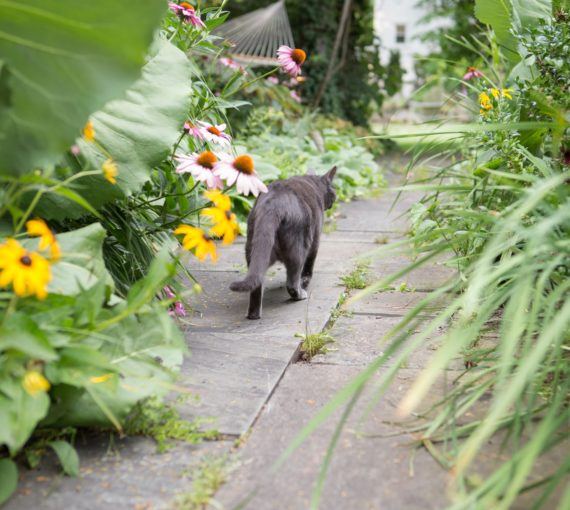
Keep cats out of the garden!
Neighbourhood kitties digging in your garden can be a nuisance and a serious health risk (due to the spread of toxoplasmosis in a proportion of cats’ feces). Maybe it’s even your own cat! Make your garden beds less inviting, or less like a litter box. Try some low-cost, upcycled — even simple prickly solutions to deter cats.

